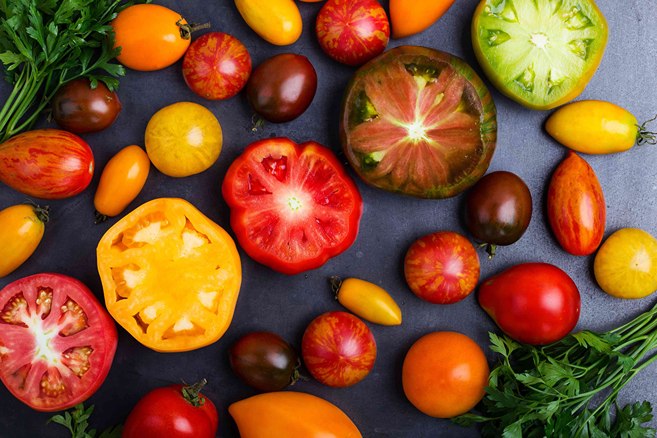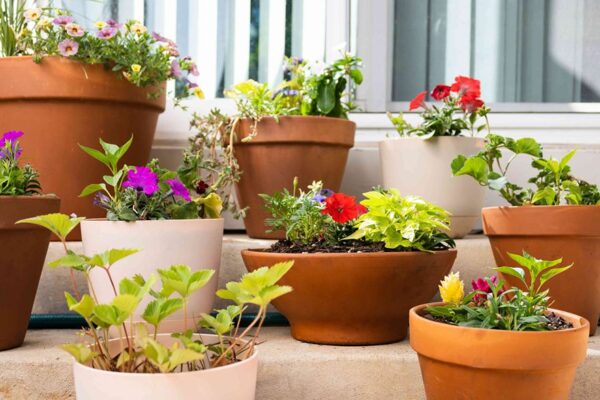Art of Planting and Growing Tomato Plant
Growing tomatoes in your own garden is a delightful experience that allows you to savor the sweet, sun-ripened flavors of summer. While grocery stores offer a variety of tempting tomato types, nothing beats the taste and freshness of homegrown tomatoes. Growing tomato plants requires careful attention to factors such as sunlight, soil quality, watering, and pest management for a bountiful harvest.
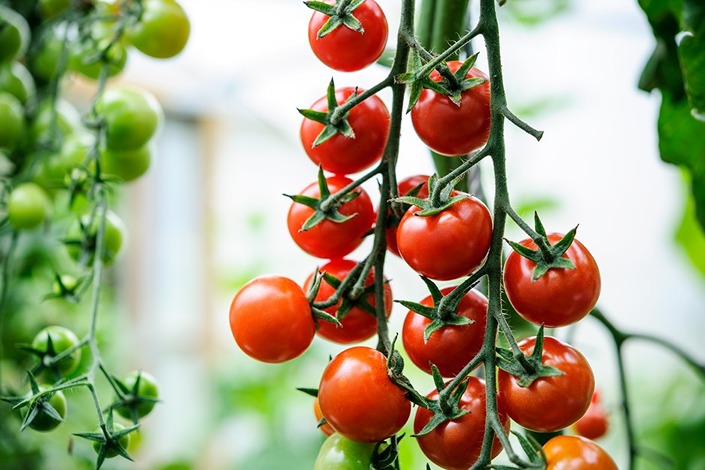
With a wide range of heirloom and hybrid varieties available, you can explore a dazzling array of shapes, colors, textures, and flavors, inspiring your culinary creativity. With the right knowledge and techniques, anyone can experience the joy of growing tomato plants and enjoy the flavorful rewards of their hard work.
Whether you’re a seasoned gardener or a beginner, cultivating tomatoes can lead to a bountiful harvest. Here’s a comprehensive guide on successfully growing tomatoes and maximizing their yield.
Choosing the Right Location for Tomato Plants
When deciding where to plant your tomatoes, ensure they receive ample sunlight, ideally six to eight hours of direct sunlight daily. Whether you’re planting them in a garden bed or a container, it’s crucial to select a spot with well-draining and fertile soil. The pH level of the soil should ideally range from 5.8 to 7, but tomatoes can adapt to various soil types except clay. If you’re growing tomatoes in containers, you may need to add compost, perlite, or use potting soil, as garden soil can be too heavy.

Planting Tomato Plants: Methods and Timing
While tomato seeds can be directly sown outdoors, you can gain a head start on the growing season by purchasing transplants or starting seeds indoors six to eight weeks before the average last frost date in your area. Once the soil has warmed sufficiently, you can transfer the tomato plants outside.
During the planting process, it’s advisable to remove the lowest leaves of each plant and place the root ball in a whole deep enough that only the top cluster of leaves remains above the ground. This planting depth is crucial for tomatoes since they can develop roots along their stems. These additional roots provide stability, especially for tall and leggy transplants, and enhance the absorption of water and nutrients.
Space small bush tomato varieties approximately 24 inches apart, while larger varieties require a spacing of 36 to 48 inches. This spacing is particularly important for sprawling indeterminate tomato types, which continue to grow until the arrival of frost. After planting the tomatoes, remember to water them thoroughly.
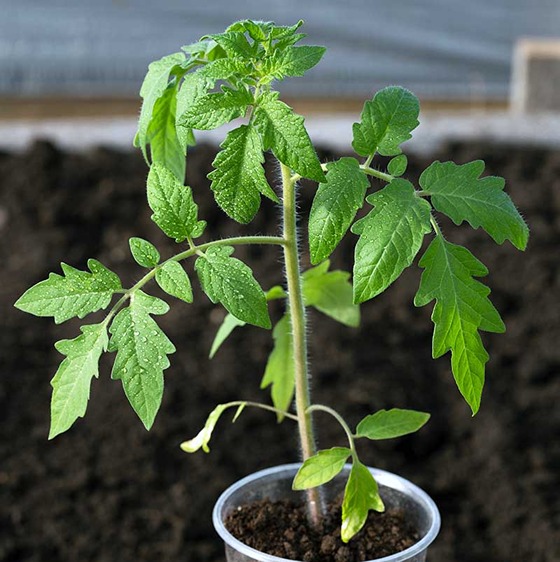
Providing Support for Tomato Plants
Immediately after planting, it’s advisable to stake, trellis, or cage the tomato plants, especially if you’re growing vining varieties. However, small bush or patio tomatoes often have sufficient support and may not require additional measures. By using cages or stakes, you can keep the leaves and developing tomatoes off the ground as the plants grow, reducing the risk of fruit rot and tomato plant diseases.
Immediately after planting, it’s advisable to stake, trellis, or cage the tomato plants, especially if you’re growing vining varieties. However, small bush or patio tomatoes often have sufficient support and may not require additional measures. By using cages or stakes, you can keep the leaves and developing tomatoes off the ground as the plants grow, reducing the risk of fruit rot and tomato plant diseases.
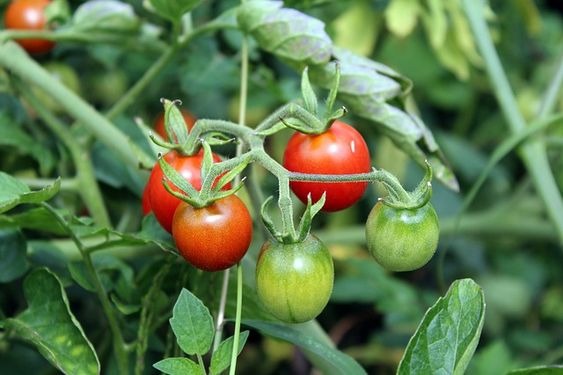
Essential Care Tips for Tomato Plants
Tomato plants possess adaptability, allowing them to tolerate suboptimal conditions. However, meeting their preferred conditions will yield the most succulent and flavorsome fruit.
Light Requirements:
In general, tomato plants thrive in full sun, necessitating six to eight hours of sunlight daily. In extremely hot conditions, providing morning sun and light afternoon shade can suffice. Although tomato plants can grow in predominantly shady areas, their fruit production will be severely limited.
Soil and Water:
For optimal growth, tomato plants require well-draining soil and consistent moisture. If rainfall is less than an inch per week, supplement it by watering the plants. A good rule of thumb for watering is to provide 20 minutes of sprinkler irrigation three times a week. In hot weather, you may need to water more frequently if you notice the plants starting to wilt. To prevent diseases, avoid wetting the foliage when watering. Direct the water to the root zones using a watering can, wand, or a drip irrigation system.
Applying mulch around your tomato plants serves multiple purposes. It discourages weed growth, helps maintain soil moisture, and prevents diseases from splashing off the soil onto the leaves during rainfall. Aim for a 3- to 4-inch-thick layer of organic mulch, such as straw, chopped leaves, or finely shredded wood chips.
Temperature and Humidity:
Tomatoes thrive in warm weather, so it’s best to wait until the soil warms in the spring before transplanting the plants. They perform optimally when the temperature ranges from 55°F to 85°F. While tomatoes love the sun, temperatures above 85°F can hinder fruit set.
Ideally, tomatoes prefer a relatively high humidity level ranging from 65 percent to 85 percent. Humidity levels exceeding this range can have adverse effects on the plants.
Fertilization:
To promote vigorous growth, tomato plants benefit from fertilizer application at two specific times during the growing season: right after planting and just before fruit development. Use a balanced liquid plant food with a ratio like 5-5-5, following the package instructions for proper application.
Pruning:
Although not mandatory, removing side shoots growing between the main stem and branches is recommended. These side shoots divert energy that could be better utilized by fruit-bearing branches.
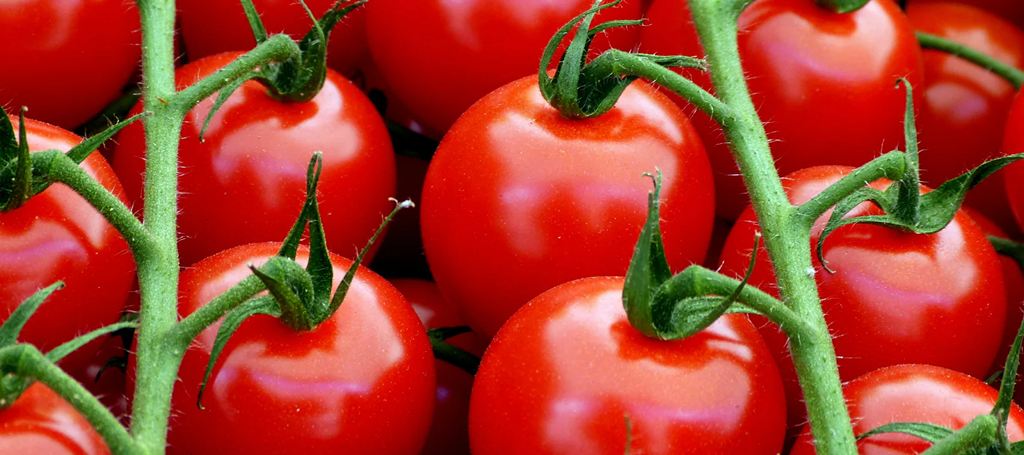
Pest and Disease Management
Tomato plants attract various pests, ranging from tomato hornworms to aphids and spider mites. It is crucial to remain vigilant and promptly address any signs of damage. Remove hornworms by handpicking them off the plants. For aphids, white flies, and spider mites, you can use insecticidal soap or neem oil following the product instructions.
Additional issues that may arise with tomato plants include blossom end rot, resulting from excessively low soil pH, and blossom drop, caused by nighttime temperatures falling below the plant’s preferred range of 55°F to 75°F.
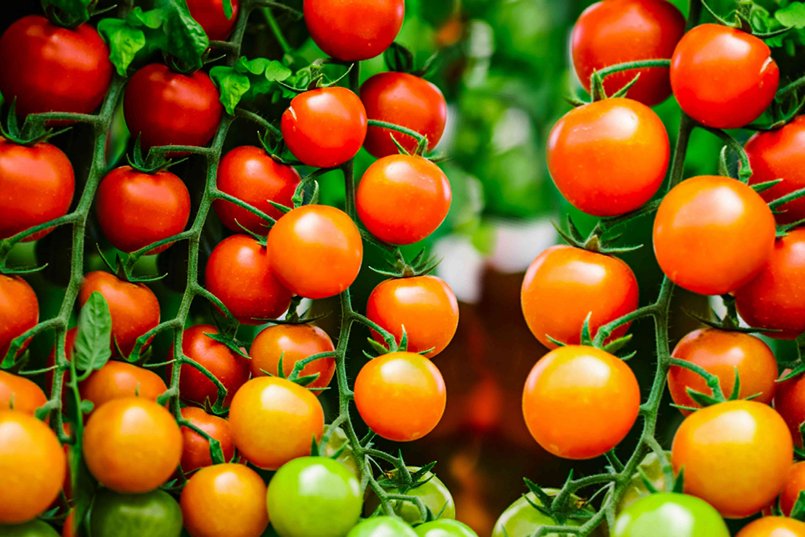
Propagation of Tomato Plants
While most gardeners start tomato plants from seeds or purchase transplants, you can extend the growing season in regions with longer periods by taking cuttings from existing plants. In May or June, select 4- to 8-inch cuttings from unwanted side shoots on the plant. Remove the leaves from the bottom half of the cutting and place it in water in a sunny location. After three to four weeks, roots will develop, and you can plant the cutting in a small pot filled with well-draining garden soil or potting soil. Once the cutting is well-rooted, transplant it into the garden. In warmer areas, you may even enjoy tomatoes before the arrival of frost.
Harvesting and Storing Tomatoes
Tomatoes are ready for harvest when they reach full coloration and firmness. The ripening process is influenced by weather conditions, with temperatures close to 75°F being ideal. As temperatures exceed 90°F, the fruits tend to soften and develop poor coloration. If you pick green tomatoes at their mature size, you can ripen them indoors.
Before the onset of a hard frost, harvest all the tomatoes except the greenest ones and bring them indoors. These green tomatoes can be used in various recipes, such as fried green tomatoes, or allowed to ripen in a closed paper bag. Check on them weekly for ripeness, removing any rotten tomatoes or those that show no signs of ripening. Another option is uprooting the entire plants and hanging them in a warm, sheltered location to facilitate further ripening.
Ripe tomatoes can be stored on the kitchen counter for up to a week, depending on the room temperature. While refrigeration is an option, keep in mind that tomatoes stored at room temperature tend to offer a more delectable taste experience.
